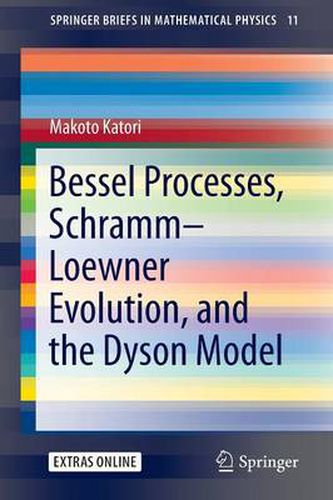Readings Newsletter
Become a Readings Member to make your shopping experience even easier.
Sign in or sign up for free!
You’re not far away from qualifying for FREE standard shipping within Australia
You’ve qualified for FREE standard shipping within Australia
The cart is loading…






This title is printed to order. This book may have been self-published. If so, we cannot guarantee the quality of the content. In the main most books will have gone through the editing process however some may not. We therefore suggest that you be aware of this before ordering this book. If in doubt check either the author or publisher’s details as we are unable to accept any returns unless they are faulty. Please contact us if you have any questions.
The purpose of this book is to introduce two recent topics in mathematical physics and probability theory: the Schramm-Loewner evolution (SLE) and interacting particle systems related to random matrix theory. A typical example of the latter systems is Dyson’s Brownian motion (BM) model. The SLE and Dyson’s BM model may be considered as children of the Bessel process with parameter D, BES(D), and the SLE and Dyson’s BM model as grandchildren of BM. In Chap. 1 the parenthood of BM in diffusion processes is clarified and BES(D) is defined for any D
1. Dependence of the BES(D) path on its initial value is represented by the Bessel flow. In Chap. 2 SLE is introduced as a complexification of BES(D). Rich mathematics and physics involved in SLE are due to the nontrivial dependence of the Bessel flow on D. From a result for the Bessel flow, Cardy’s formula in Carleson’s form is derived for SLE. In Chap. 3 Dyson’s BM model with parameter
is introduced as a multivariate extension of BES(D) with the relation D =
+ 1. The book concentrates on the case where
= 2 and calls this case simply the Dyson model.The Dyson model inherits the two aspects of BES(3); hence it has very strong solvability. That is, the process is proved to be determinantal in the sense that all spatio-temporal correlation functions are given by determinants, and all of them are controlled by a single function called the correlation kernel. From the determinantal structure of the Dyson model, the Tracy-Widom distribution is derived.
$9.00 standard shipping within Australia
FREE standard shipping within Australia for orders over $100.00
Express & International shipping calculated at checkout
This title is printed to order. This book may have been self-published. If so, we cannot guarantee the quality of the content. In the main most books will have gone through the editing process however some may not. We therefore suggest that you be aware of this before ordering this book. If in doubt check either the author or publisher’s details as we are unable to accept any returns unless they are faulty. Please contact us if you have any questions.
The purpose of this book is to introduce two recent topics in mathematical physics and probability theory: the Schramm-Loewner evolution (SLE) and interacting particle systems related to random matrix theory. A typical example of the latter systems is Dyson’s Brownian motion (BM) model. The SLE and Dyson’s BM model may be considered as children of the Bessel process with parameter D, BES(D), and the SLE and Dyson’s BM model as grandchildren of BM. In Chap. 1 the parenthood of BM in diffusion processes is clarified and BES(D) is defined for any D
1. Dependence of the BES(D) path on its initial value is represented by the Bessel flow. In Chap. 2 SLE is introduced as a complexification of BES(D). Rich mathematics and physics involved in SLE are due to the nontrivial dependence of the Bessel flow on D. From a result for the Bessel flow, Cardy’s formula in Carleson’s form is derived for SLE. In Chap. 3 Dyson’s BM model with parameter
is introduced as a multivariate extension of BES(D) with the relation D =
+ 1. The book concentrates on the case where
= 2 and calls this case simply the Dyson model.The Dyson model inherits the two aspects of BES(3); hence it has very strong solvability. That is, the process is proved to be determinantal in the sense that all spatio-temporal correlation functions are given by determinants, and all of them are controlled by a single function called the correlation kernel. From the determinantal structure of the Dyson model, the Tracy-Widom distribution is derived.